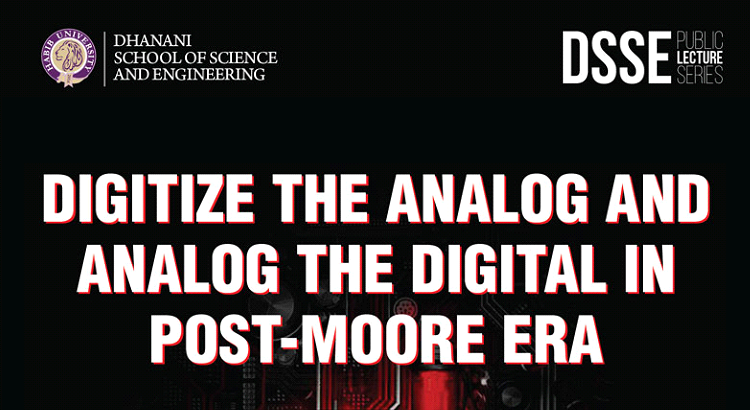14th November, 2019
Dr Saad bin Nasir is a senior power and mixed signal IC designer for Qualcomm Inc., USA. He completed his PhD from the Georgia University of Technology, USA in 2017. He has published 25 journal articles and refereed conference publications in areas of PMIC design, digital/mixed- signal circuits for reinforcement learning, secure circuit design and alternate computer architectures. He currently serves on the technical program committees of Design Automation Conferences, Custom Integrated Circuits Conference and VLSI design conference.
Dr Nasir brought his expertise in circuit design and semiconductors to Habib in an informative discussion on the future of circuit systems given the changing economic conditions and technological advances. His main idea centred on the consequences for circuit systems given the realisation of the Moore’s Law. As he elaborated, Moore’s Law holds that with time, approximately, every two years, the number of transistors on any given surface area of microchip, doubles, but since cost of computers will halve so price will reduce. However, today we have reached the point where owing to constrains of silicon properties, the price has actually increased and the Moore’s Law is no longer valid.
Dr Nasir used detailed graphic representations of circuits to support his argument. He took us into the inner mechanisms of a cell phone circuit board, depicting its make up of System on Chip (SoC), PMIC and capacitors and explained how it could be efficiently changed through digitization. Changing analog to digital would mean less capacitors taking up space, allowing a larger SoC with faster speed and better performance. However, digital load circuits do come with challenges like requiring large operational voltage, fast circuits that heat up because of PVT changes and other limitations that are not found in analog systems. Similarly, Dr Nasir pointed out the advantages and restrictions of analog systems in comparison to digital systems, like its lack of noise resilience. The ideal solution in this case would be hybridization. Taking the strengths of both analog and digital in combination will result in a more efficient system by compensating for the limitations of each.
In an era where technological leaps in AI, augmented reality, IoT and machine learning are being achieved by the year, focus is moving to architectural design of systems. Circuit and system design is coming to the forefront. At the same time that digitization is taking hold, for higher performance circuits, innovation in analog system is once again a blooming field given the diminishing returns of digital scaling. Part analog and part digital; hybrid is the future of the emerging semiconductor industry. Dr Nasir aimed at making the community aware of the prospective market so we know where to focus our research, investment and energy to accrue most success and advancement.

